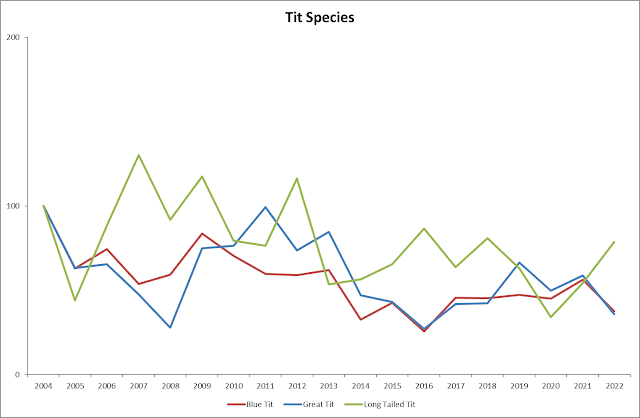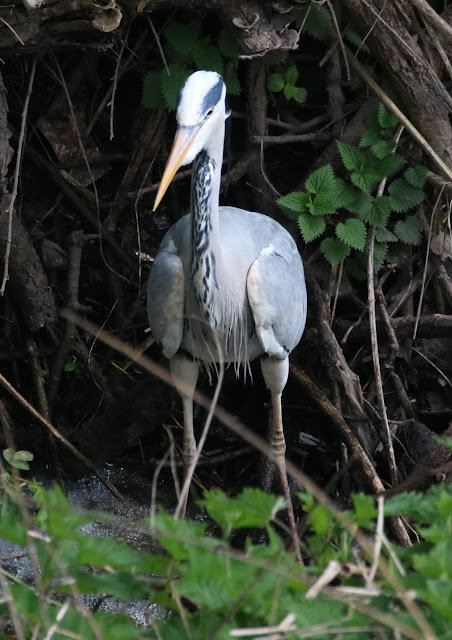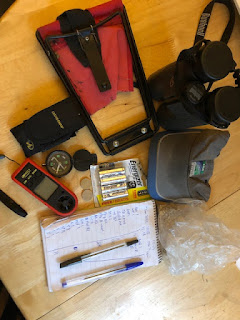Following on from my last mammal post it is another popular mammal that has inspired this post.
The Hedgehog must be one of Britain's most beloved garden animals. They have such great character and have been exemplified by Beatrice Potter's Mrs. Tiggywinkle. The fact that they visit gardens means that they are readily observable to the layman. You do not need specialist equipment or years of tracking experience, camouflage, or hours in a hide to see them.
At this time of year and particularly during this warm spell they are busy putting on weight for their winter hibernation. A chance sighting in the garden earlier this month revealed that we had a hedgehog visiting. We have a little hog-i-tat at the bottom of the garden which they don't seem to use and built a little feeding station with bricks. We experimented with food, we started with dog food at first, which they seemed to like, then specific canned hedgehog food, which they didn't seem to like before settling for dried hedgehog food that they seem much more comfortable with. I must stress here that bread and milk, the kind of food we put out as a child should never be given. Hedgehogs are lactose intolerant and this can be very bad for them.
I put out one of my trail cameras and discovered that they visited several times during the night and that there were two individuals. One a large fat adult and a much small individual.
Last Tuesday just as I left for work at 8am the small hedgehog was noticeable out in the daylight. This is a bad sign. Any hog out in daylight is in trouble. It had only just gotten light so I thought he had just gotten caught out and he seemed quite mobile and alert and so I left him. Ironically that day my parents and my nieces went to a Hedgehog Day at Hill Close Gardens. There they met a lady from Warwickshire Hedgehog Rescue. They are an amazing team that looks after hedgehogs in the area.
The key thing at this time of year for hedgehogs is putting on weight and so when we saw the hog that night I grabbed him and weighed him. The little fellow had a good roll response and despite being covered in fleas seemed in good health. He weighed just 325g just over half the weight he needed to be for hibernation. I was a little concerned, but we were feeding him and he seemed alert and well so I released him.
Yesterday, however, at midday I saw the little thing out down the pond, it was broad daylight and the alarm bells rang. He still seemed well, alert, and very mobile, he could certainly move when he wanted to. He was definitely hungry, he was moving methodically through the garden through the undergrowth and leaves snuffling and searching for food. Knowing he was underweight and out in the day, a risk to his survival.
I gathered him up into a box. I lined it with old curtains and put in some of the dried food and water, and rang the Hedgehog Rescue lady. As she was fairly local she came and collected him, I m not sure he would have enjoyed my taking him by bike!
Huey, as my nieces insisted he be called was now in the best place. The carer would check him for parasites, something that they particularly suffer from when they turn towards eating slugs and snails. She would give him fluids and any medication needed, and if he survived would return him at a safe weight for release.
It is important to act quickly to a hedgehog out in the day. They are always in some kind of trouble and parasitic infections in the gut can turn nasty quickly. We had a hedgehog last year that we tended for a few hours before getting him to the Rescue Centre, but it was too late and he died. Hedgehogs often appear very perky and well before going drastically downhill.
So Huey is safe and warm. The carer will do all she can for him, but this incident reinforced something I have discussed on this channel before regarding ethics. When I saw Huey out in the daylight I was both concerned for him and delighted that I could get a good look at a wild hedgehog doing its thing.
I watched him as he turned the leaves searching for beetles and worms and a took a quick snap with my phone to document his size. It was then a thought crossed my mind. Perhaps I should go and get my SLR, this would make for some excellent photographs, it's so hard to take them at night and here Huey was posing in the beautiful autumn sunlight. The thought faded as I remembered that the only reason he was out in the day was that he was either unwell or absolutely starving. Instead of reaching for my Camera, I dashed past for a box. This was undoubtedly the right thing to do.
I have photos of animals in distress, a Fox and a Muntjac, both of these images taken before I realized their injuries. The photos took new meaning then, their beauty was tinged with sadness and darkness. I only ever use those images to illustrate the frailty of nature and never for profit or gain. It is our responsibility to protect our wildlife and treat them with respect. I could not help the Fox or Muntjac but I didn't want to denigrate their nature by capturing their likeness for a technically great shot.
I wonder now about all the photos I see of Hedgehogs beautifully framed in the leaves in full daylight. I hope they were all taken at rescue centres where the individual was cared for, but suspect that many were not. I understand that not everyone will know that a daytime Hedgehog is in trouble and just relish in this stroke of luck, but I hope everyone reading this will now understand that they need help, that they aren't well and they aren't posing for you.
A good general rule of thumb is that if you can approach an animal or bird then it is unwell and needs help. I have been called to help all sorts of birds and animals. Birds trapped in buildings, pigeons knocked out by a window collision, rabbits caught in cricket nets, and the like and in all cases the animals that allowed me close enough were in severe trouble. There is a balance between distressing the animal more and trying to help. Death is a natural part of nature and I personally find that unless you can safely, for you and them, catch them and get them to a vet who can do something it is best to let nature takes its course.
So, Huey is safe for now, he's not out of the woods, it all depends on the parasite load in his body, but he is in the best place. I want everyone to be aware that a daytime hedgehog needs help and there are legions of volunteers across the country that care for hedgehogs, a now increasingly rare mammal. I want to say a huge thank you to these people who give up their time and money to protect this species. We can all do our bit and should -
- feed our hedgehogs properly, not bread and milk
- Have dead wood in the garden to encourage beetles and grubs
- Leave leaves and compost bins for nesting
- check bonfires before lighting
- Take daytime hogs to a carer
- Cut hedgehog runs in our hedges and fences
Warwickshire Hedgehog Rescue - https://warwickshirehedgehogrescue.org/






.jpg)


.jpg)





























